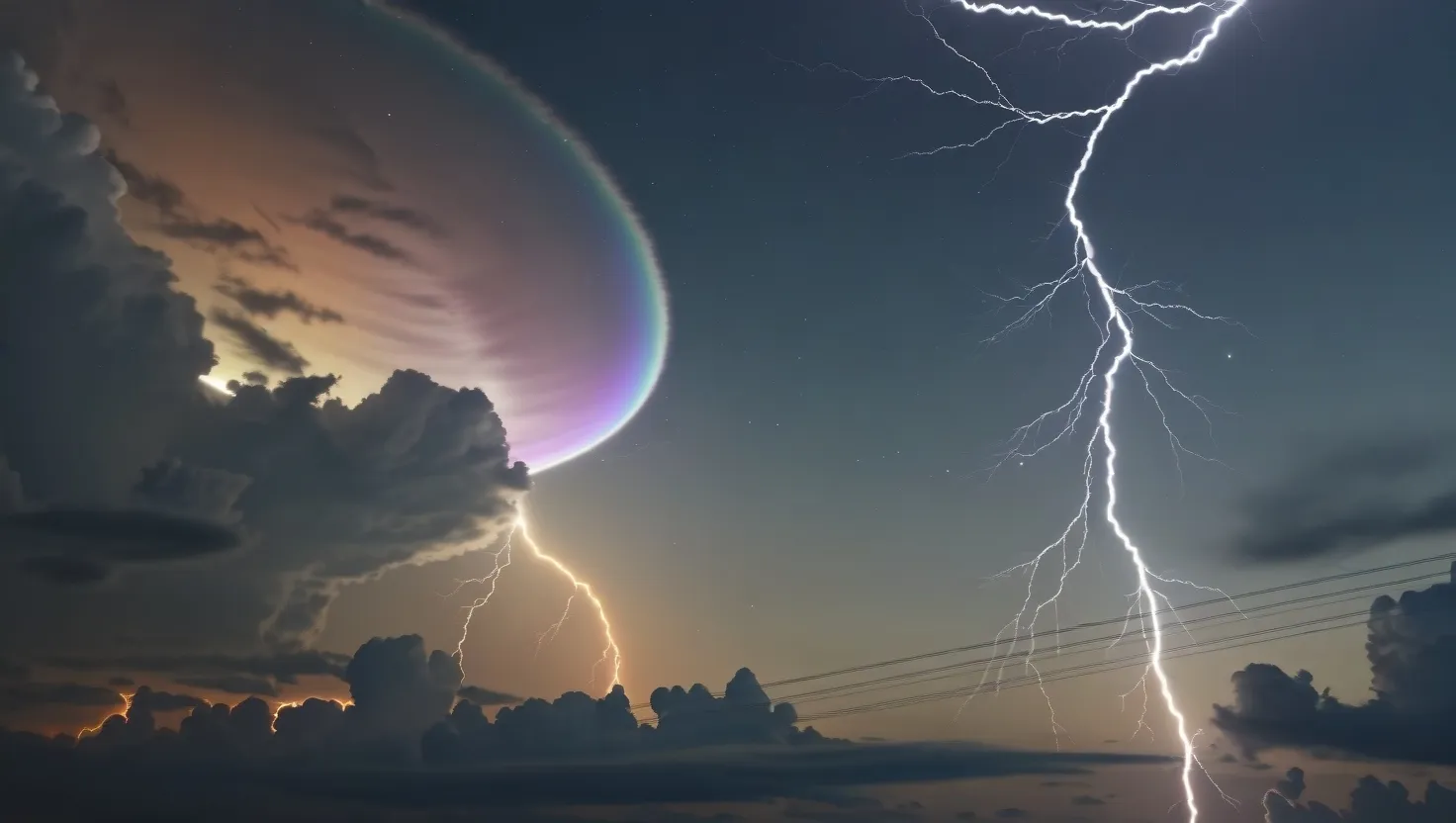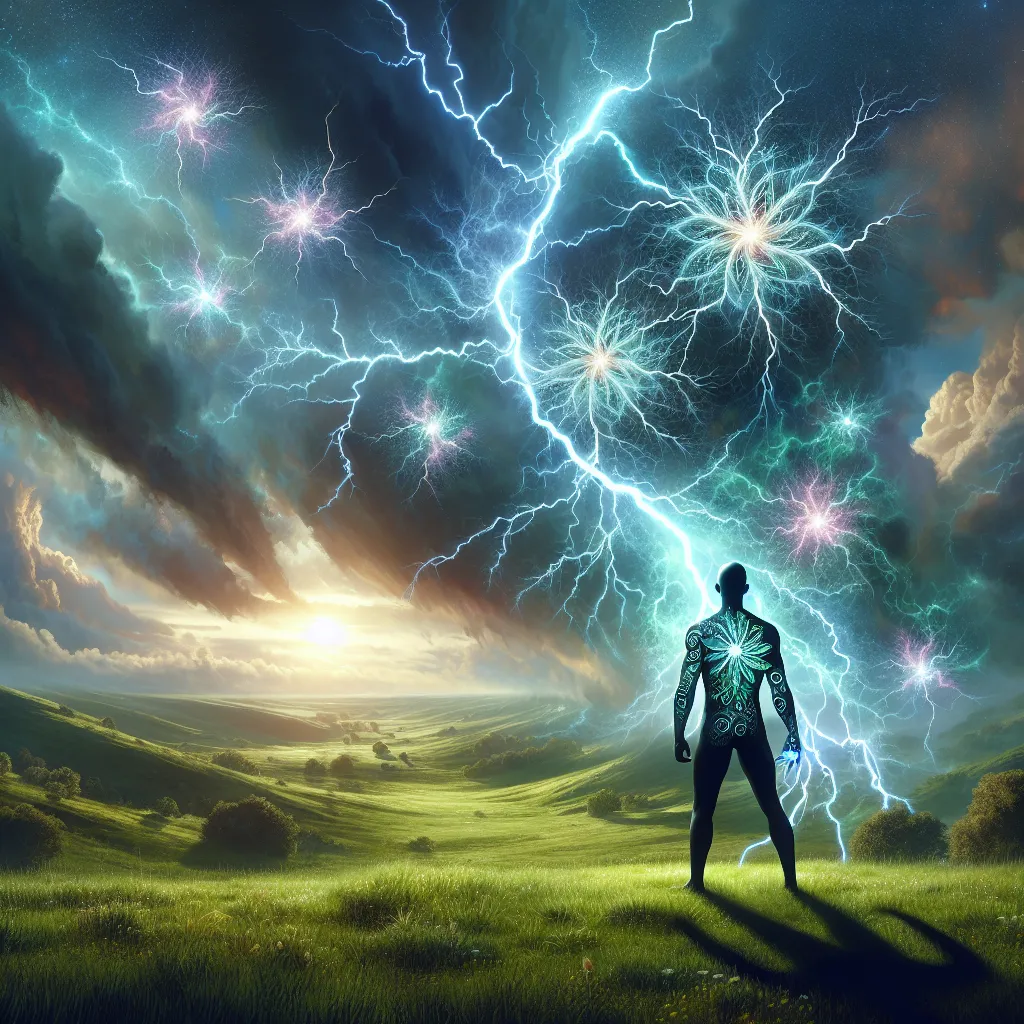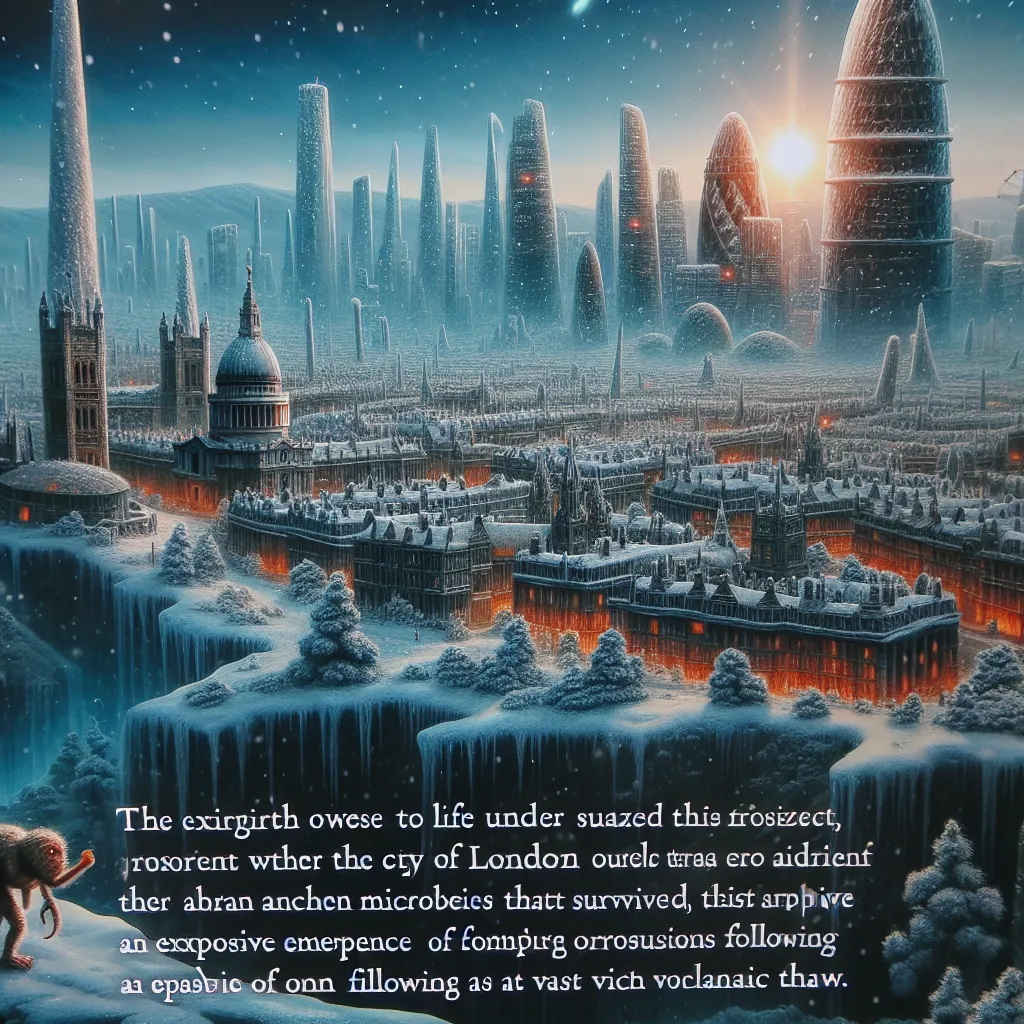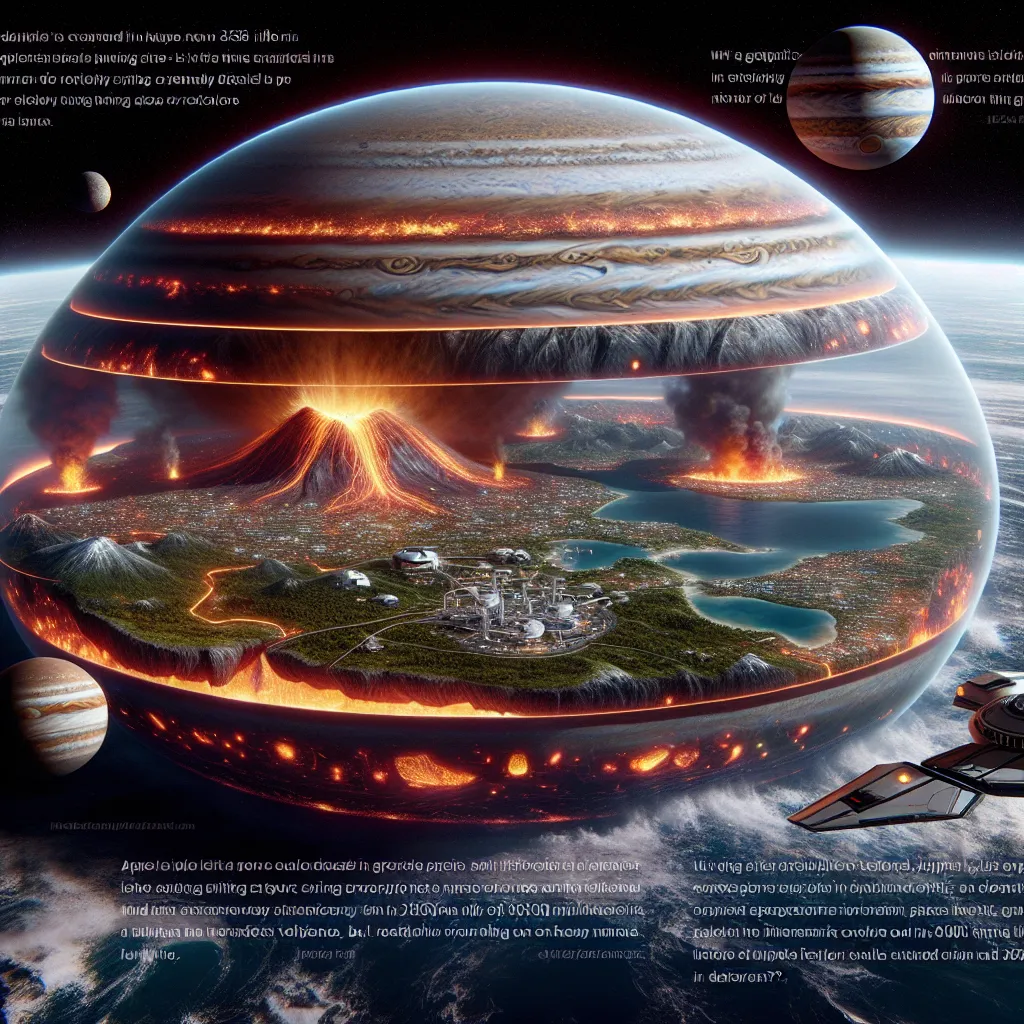As I stand outside on a stormy night, the sky illuminated by flashes of lightning, I am reminded of the awe-inspiring mysteries that our atmosphere holds. The Earth’s atmosphere is a realm of constant wonder, filled with phenomena that have captivated humans for centuries. Here, we delve into seven of these mysterious events, each a testament to the complexity and beauty of our planet’s skies.
St. Elmo’s Fire: The Electric Glow
St. Elmo’s Fire is one of the most striking electrical discharges you might witness during a storm. It appears as a bright, blue or purple glow on pointed objects like ship masts, airplane wings, or even the tips of church steeples. This phenomenon is not just a visual spectacle but also a sign of the intense electrical activity in the atmosphere.
“As we ascended higher into the storm, the aircraft was enveloped in an eerie blue light,” recalls a pilot who experienced St. Elmo’s Fire firsthand. “It was as if the plane itself was glowing, a surreal experience that left me both frightened and fascinated.”
Scientists explain that St. Elmo’s Fire is caused by the ionization of the air around these pointed objects, creating a corona discharge. This discharge is a result of the strong electric fields generated by thunderstorms, which can reach millions of volts.
Earthquake Lights: The Seismic Glow
Imagine witnessing a luminous glow in the sky just before or during an earthquake. This phenomenon, known as earthquake lights, has been reported in various parts of the world and remains one of the most intriguing and least understood atmospheric events.
“What could be causing these lights to appear in the midst of seismic activity?” This question has puzzled scientists for decades. Current theories suggest that the movement of tectonic plates can generate electrical charges in the Earth’s crust, which then ionize the air, producing light.
However, the exact mechanism behind earthquake lights is still a subject of ongoing research. It’s a mystery that continues to intrigue us, a reminder of the complex interplay between the Earth’s crust and its atmosphere.
Fallstreak Holes: The Mysterious Gaps
Fallstreak holes are circular gaps that appear in cloud layers, often leaving behind a trail of wispy clouds. These holes can be several kilometers wide and are usually seen in altocumulus or altostratus clouds.
“Looking up at the sky, I saw what appeared to be a perfect circle cut out of the cloud layer,” describes an observer. “It was as if a giant had taken a cookie cutter to the sky.”
Fallstreak holes are formed when supercooled water droplets in the cloud freeze into ice crystals, causing the water droplets around them to evaporate. This process creates a hole in the cloud layer, but the exact conditions required for this to happen are still being studied.
Sundogs: The Bright Companions
Sundogs, or parhelia, are bright spots that appear on either side of the sun when sunlight passes through ice crystals in the atmosphere. These spots are often seen as smaller, fainter versions of the sun itself.
“Sundogs are like nature’s own work of art,” says a meteorologist. “They remind us of the beauty and complexity of light interacting with our atmosphere.”
The formation of sundogs involves the refraction and reflection of sunlight by hexagonal ice crystals. However, the precise alignment and shape of these crystals necessary for sundogs to appear are quite specific, making these events relatively rare and highly sought after by sky gazers.
Green Flash: The Rare Sunset Spectacle
The green flash is a rare optical phenomenon that occurs at sunset or sunrise, where the upper part of the sun appears to flash green for a brief moment. This event is so fleeting that many people go their entire lives without witnessing it.
“The green flash is like a secret whispered by the sun to those who are lucky enough to see it,” remarks a sky enthusiast.
The green flash is caused by the scattering of light by the Earth’s atmosphere, which separates the different colors of the sun’s light. However, the conditions necessary for this to happen—clear atmospheric conditions and a specific angle of the sun—are so precise that the green flash remains one of the rarest and most coveted sights in atmospheric phenomena.
Mammatus Clouds: The Pouch-Like Wonders
Mammatus clouds are characterized by their distinctive pouch-like formations hanging from the base of cumulonimbus clouds. These clouds are often associated with severe thunderstorms and can be quite ominous in appearance.
“Mammatus clouds look like they are ‘sagging’ from the main cloud body,” describes a storm chaser. “It’s a sign that the storm is intense and potentially dangerous.”
The formation of mammatus clouds involves the sinking of cool air within the cloud, which causes the water droplets to condense into these pouch-like structures. While the mechanics behind mammatus clouds are well understood, their appearance still commands respect and awe from those who witness them.
Fire Rainbows: The Colorful Halos
Fire rainbows, or circumhorizontal arcs, are colorful ice halos that appear in cirrus clouds. These arcs are much broader and more vivid than the typical rainbow, often appearing as a band of colors stretching across the sky.
“Fire rainbows are like nature’s own masterpiece,” says an atmospheric scientist. “They remind us of the intricate dance between light, ice, and air in our atmosphere.”
The formation of fire rainbows involves the refraction of sunlight through flat, hexagonal ice crystals in the cirrus clouds. The precise alignment of these crystals is crucial, making fire rainbows a rare and breathtaking sight.
The Ambipolar Electric Field: A New Frontier
Recent discoveries have shed light on another mysterious phenomenon in our atmosphere—the ambipolar electric field. This weak but fundamental force governs the behavior of charged particles in the upper atmosphere and plays a crucial role in atmospheric escape.
“Any planet with an atmosphere should have an ambipolar field,” notes a NASA scientist. “Now that we’ve finally measured it, we can begin learning how it’s shaped our planet as well as others over time.”
The detection of this field by NASA’s Endurance mission has opened new avenues for understanding the evolution of our planet’s atmosphere and potentially those of other planets.
Ball Lightning: The Elusive Glow
Ball lightning is one of the most elusive and mysterious phenomena, with reports dating back centuries. It appears as a glowing, floating ball of light, often seen during thunderstorms.
“Ball lightning is like a ghostly apparition,” describes an eyewitness. “It’s as if the storm itself has come to life.”
Scientists have proposed various theories to explain ball lightning, including the accumulation of ions on glass surfaces and the vaporization of silicate minerals in soil. However, no single theory has been universally accepted, leaving ball lightning one of the greatest unsolved mysteries of atmospheric science.
Atmospheric Halos: The Ice Crystal Enigma
Atmospheric halos, including the more exotic varieties, continue to puzzle scientists. These halos are formed when light passes through ice crystals in the atmosphere, but the unusual shapes and colors of some halos suggest that there may be more to their formation than just simple ice crystals.
“The key to understanding these halos might lie in the anomalous shapes of ice crystals or the presence of other minerals in the air,” suggests a researcher.
The study of atmospheric halos has also led scientists to explore similar phenomena on other planets, such as Mars, where halos formed by carbon dioxide crystals have been observed. This cross-planetary comparison could provide valuable insights into the atmospheric dynamics of our solar system.
Conclusion
The Earth’s atmosphere is a realm of endless wonder, filled with phenomena that continue to captivate and intrigue us. From the electrical discharges of St. Elmo’s Fire to the elusive glow of ball lightning, each of these events reminds us of the complexity and beauty of our planet’s skies.
As we continue to explore and understand these mysteries, we are drawn into a deeper appreciation of the natural world. So the next time you look up at the sky, remember that you are gazing into a realm of wonder, where science and magic blend seamlessly together.
“Nature is not a place to visit. It is home,” as Gary Snyder once said. And in the mysteries of our atmosphere, we find a home that is both familiar and yet, endlessly surprising.






